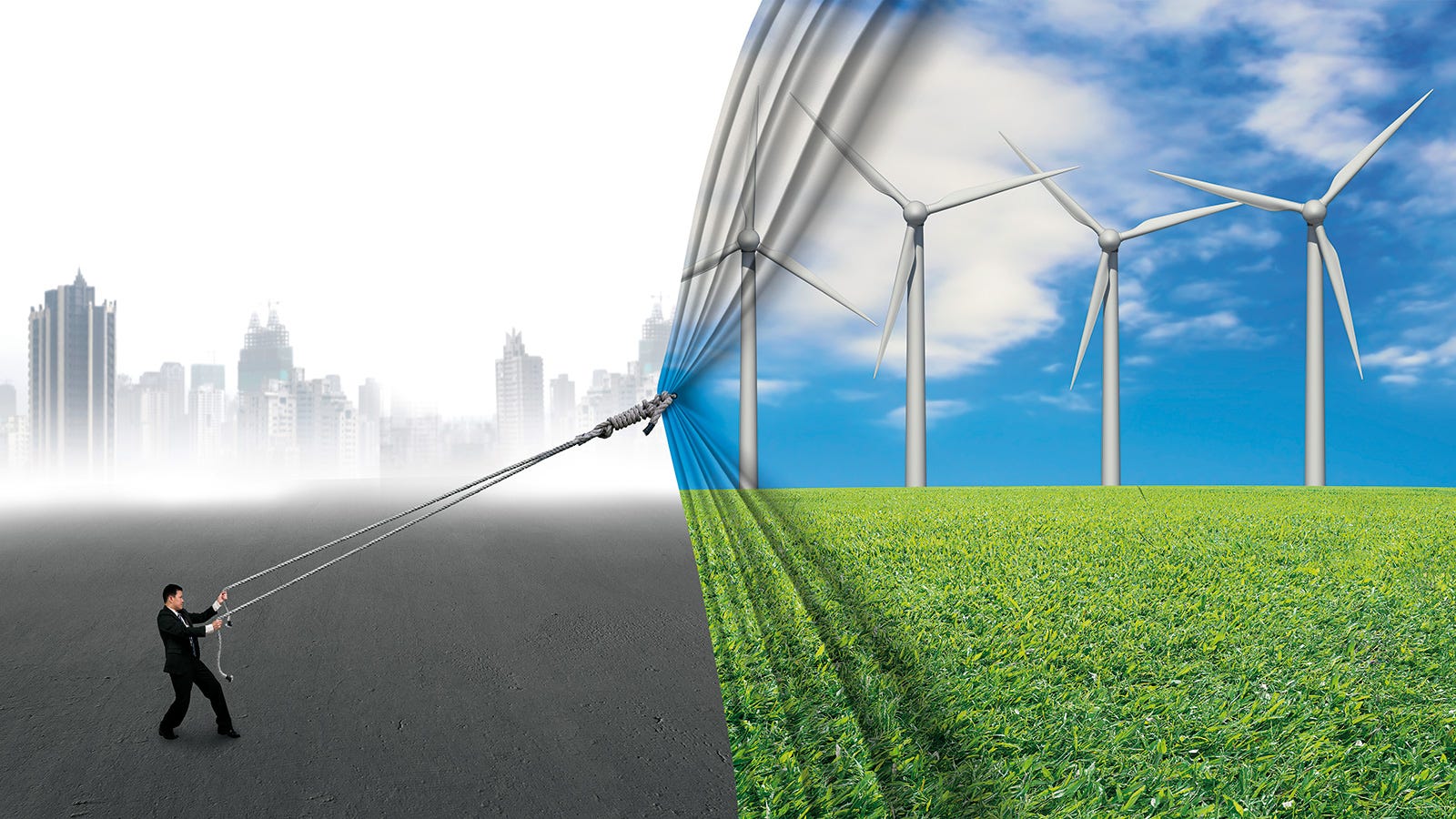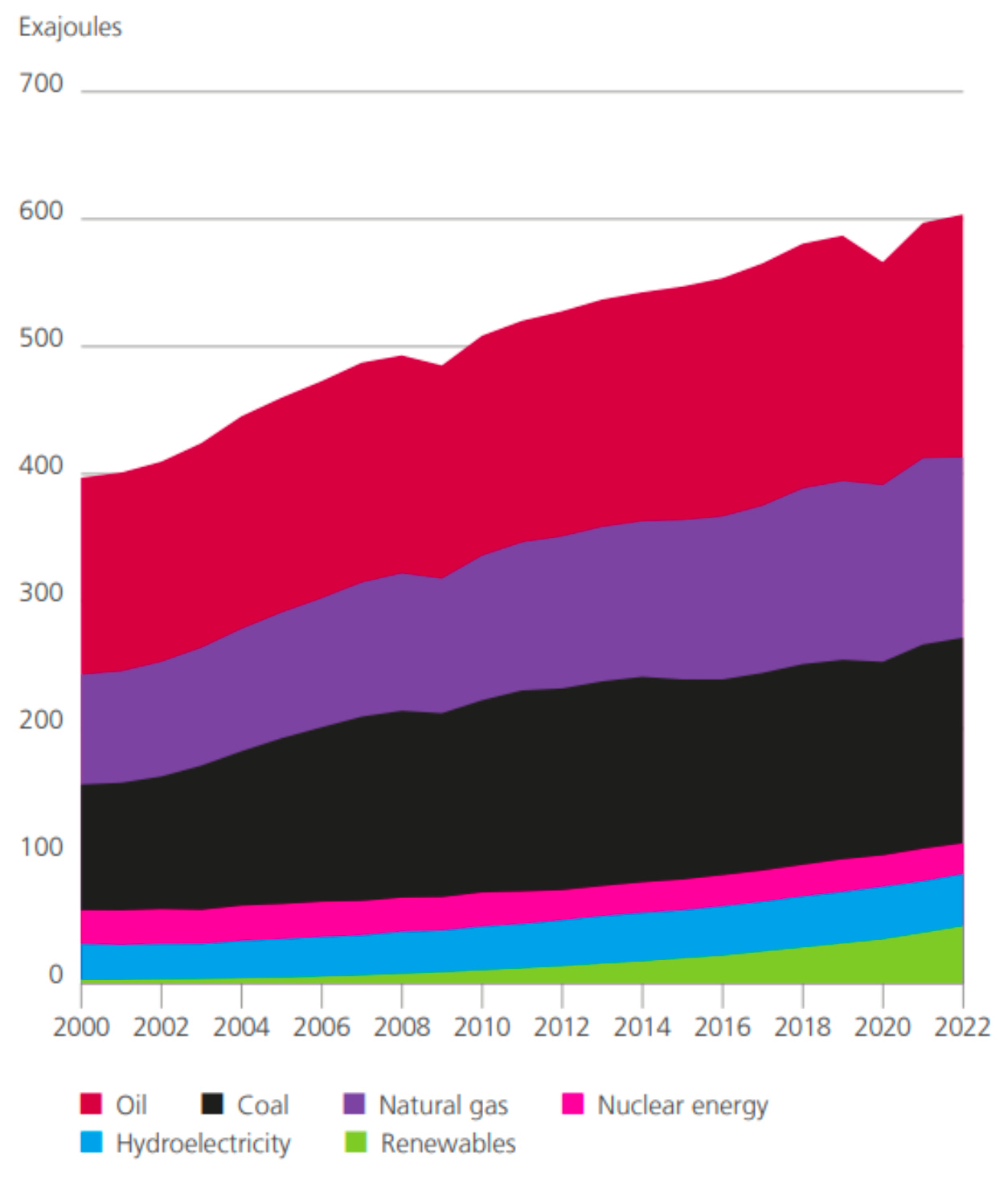Why NetZero by 2050 is impossible (short of economic collapse)
And why it is not very likely after 2050 either
Over the past few months, I have written numerous articles on why Green energy policies and their goal of NetZero by 2050 are very unlikely to succeed and why attempting to do so will be bad for humanity. Just as important, there are far better alternatives to both.
For those who have not heard, the year 2024 marks the passing of the halfway point between the year 2050 and the adoption of the Kyoto Protocol committing the signatory countries to cut greenhouse gases to “a level that would prevent dangerous anthropogenic interference with the climate system”
So now is a good time to take stalk on what the world has accomplished so far.
See also my other posts on Energy:
Recently I read an article by Vaclav Smil entitled “Halfway between Kyoto and 2050 .” Vaclav Smil summarizes the reasons why the Green Energy Transition and Netzero by 2050 will fail far better than I can do. You can download a free PDF of the article here. If you are interested in energy, I would highly recommend that you do so and read it carefully.
For those who do not know. Vaclav Smil is a genius among geniuses. In addition to being one of the most productive authors in the world, he is also one of the world’s leading authorities on energy. Quite simply, if you have not read Smil, then you do not understand energy.
For those who want a crash course on Vaclav Smil’s books, I recommend you read the following summaries in my library of online book summaries:
Vaclav Smil has also written some fabulous books on the role of technological innovation in modern economic history:
For the rest of you, I will quote Smil's most important points in this article. The headers are mine, but the quotes are 100% Smil. In some cases, I have added bullet points to increase readability.
The goal is unprecedented
Smil: “This goal is to be achieved by energy transition whose speed, scale, and modalities (technical, economic, social, political) would be historically unprecedented”
Greens have failed to reduce carbon emissions
Smil: “What is particularly clear that (in the absence of an unprecedented and prolonged global economic downturn) the world will remain far from reducing energy-related CO2 emissions by 45% from the 2010 level by 2030: for that we would have to cut the emissions by nearly 16 billion tons between 2023 and 2030 –- or eliminating nearly as much fossil carbon as the combined emissions of the two largest energy consumers, China and the USA.”
Greens underestimate the scope of what they are proposing
Smil: “In terms of their final uses this means that we would have:
to replace more than 4 TW of electricity-generating capacity now installed in large coal- and gas-fired stations by non-carbon conversion; to
to substitute nearly 1.5 billion combustion (gasoline and diesel) engines in road and off-road vehicles;
to convert all agricultural and crop processing machinery (including about 50 million tractors and more than 100 million irrigation pumps) to electric drive or to non-fossil fuels;
to find new sources of heat, hot air and hot water used in a wide variety of industrial processes (from iron smelting and cement and glass making to chemical syntheses and food preservation) that now consume close to 30% of all final uses;
to replace more than half a billion natural gas furnaces now heating houses and industrial, institutional and commercial places by heat pumps or other sources of heat; and
to find new ways to power nearly 120,000 merchant fleet vessels (bulk carrier of ores, cement, fertilizers, wood and grain and container ships, the largest one with capacities of some 24,000 units, now running mostly on heavy fuel oil and diesel fuel) and
nearly 25,000 active jetliners that form the foundation of global long-distance transportation (fueled by kerosene).”
And we have made very little progress in the above so far
Smil: “On the face of it, and even without performing any informed technical and economic analyses, this seems to be an impossible task given that:
we have only a single generation (about 25 years) to do it;
that we have not even reached the peak of global consumption of fossil carbon; that the peak will not be followed by precipitous declines;
that we still have not deployed any zero-carbon large-scale commercial processes to produce essential materials; and
that the electrification has, by the end of 2022, converted only about 2% of passenger vehicles (more than 26 million) to different varieties of battery-powered cars and
that decarbonization is yet to affect heavy road transport, shipping and flying.”
Energy transitions take many decades
Smil: “Coal surpassed global wood combustion only in 1900, and its share of energy supply peaked only in the mid-1960s; oil began to supply more than 25% of all fossil fuels only during the late 1950s, nearly a century after its first modern commercial extraction, and natural gas began to contribute more than 25% of fossil energy supply just before the end of the 20th century, after some 130 years of the industry’s development.”
And the First Energy Transition (wood to coal) is still incomplete
Smil: “Moreover, even the first grand energy transition still has not been completed more than two centuries after it began: nearly 3 billion people (in Africa, monsoonal Asia, and Latin America) still depend, mainly for cooking, some also for heating, on traditional biomass energies: fuel wood (and charcoal made from it), straw and dried dung still supplied about 5% of the world’s primary energy in 2020.”
Even the most optimistic scenarios come far short of NetZero
Smil: “International Energy Agency’s World Energy Outlook 2023 illustrates both the widely misunderstood realities and the likely outcomes of the unfolding transition. The outcome of its scenario based on the stated national policies (that is on policies already adopted by individual states to reach the intended decarbonization goals)…”
“By 2050 even coal consumption, after an unprecedented projected decline, would be as high as it was at the beginning of the 21st century; both crude oil and natural gas consumption (yet to peak) would be nearly as high (>95%) as in 2030; and a steady decline would still leave the fossil fuel consumption at about 85% of the current level (Fig. 4). That is, of course, very far from any zero carbon scenarios.”
Energy transitions require vast infrastructure
Smil: “global energy transitions are complicated, multifaceted, protracted and in their details rather unpredictable system changes which require
mass-scale development, adoption and massive scaling-up of new techniques (be they large-scale “green” hydrogen electrolysis or extensive multiplication of small modular fission reactors),
construction of new extraction, processing, and distribution networks (to produce large quantities of basic materials, metals, synthetic compounds and automated controls),
all requiring decades of steady, high-level investments and political commitments that will result in major economic and social changes.
In the past,
replacing wood stoves by coal stoves, waterwheels and wind mills by steam engines,
horse teams by diesel engines and
oil and gas lamps by electric lights required new, extensive and complicated infrastructures needed
to extract (coal mines, oil and gas fields, dams),
prepare (coal sorting and cleaning, crude oil refining, natural gas processing),
transport (railways, pipelines, ships, trucks, high-voltage transmission lines) and
convert (steam engines, steam and gas turbines, furnaces, boilers, turbogenerators, transformers, electric motors) new forms of energy,
and the invention and mass production of new converters ranging from light bulbs and toasters to engines able to operate with high efficiency and astonishing reliability aloft or under water.”
The Green energy transition will require even more infrastructure
Smil: “The unfolding energy transition requires not just very large numbers of new wind turbines and photovoltaic panels to generate “green” electricity. Renewable generation also needs
expanded high-voltage transmission (overhead wires and undersea cables from offshore wind sites) to bring the electricity from the windiest and sunniest places to often distant cities and industrial areas. As it ramps up it will also need
capacious electricity storage, such as batteries (or other mechanical, thermal, or chemical arrangements) large enough to cope with the intermittency of wind and solar radiation: this need will become imperative if these sources become dominant generators of electricity and if there would not be,
complemented, as they are today, by base-load nuclear or fossil-fueled generation or by near-instant deployment of gas turbines.
Moreover, there are many final energy conversions (ranging from heavy ocean shipping and long-distance commercial aviation to key industrial processes, above all continuous chemical syntheses) that cannot be readily electrified, and
we would need substantial quantities of solid and liquid fossil carbon even in the zero-carbon world for paving (asphalt) and for industrial and commercial lubricants.
Producing what I have called the four pillars of modern civilization -– cement, primary iron, plastics, and ammonia –- now depends on fossil fuels, and replacing them with alternatives will require the development of new mass-scale industries and distribution networks ranging from green hydrogen (made by electrolysis of water by green electricity) and ethanol to new synthetic fuels.”
Previous energy transitions had cost advantages
Smil: “Costs can alleviate or aggravate the challenges of complexity. If more complex innovations are cheaper than the established ways, or if their higher cost are outweighed by higher quality, efficiency and convenience, then the transitions can proceed rapidly…
In contrast, renewable conversions start with the inherent disadvantages of low power density and intermittency, and hence their full costs (with service comparable to the on-demand supply and reliability of fossil fuel converters) are considerably higher than the marginal cost of purchasing and installing new PV panels or wind turbines.”
There has been no net decarbonization
Smil: “Contrary to common impression, there has been no absolute worldwide decarbonization –- just the very opposite as the world has become much more reliant on fossil carbon (even as its relative share declined a bit)… All we had managed to do halfway through the intended grand global energy transition is a small relative decline of fossil fuel’s share in the world’s primary energy consumption, from nearly 86% in 1997 to about 82% in 2022. But this marginal relative retreat has been accompanied by a massive absolute increase of fossil fuel combustion: in 2022 the world consumed nearly 55% more energy locked in fossil carbon than it did in the year 1997…
The conclusion is unequivocal: by 2023, after a quarter century of targeted energy transition, there was no absolute global decarbonization of energy supply, just the opposite as the world had substantially increased its dependence on fossil carbon. This is a fundamental point: changes in global average atmospheric temperature respond to changes in the total atmospheric burden of radiation-absorbing gases, not to any local or national declines.”
China’s increases are bigger than the West’s cuts
Smil: “Absolute cuts in carbon emissions that took place in such large economies as the EU (-23%) and the US (-9%) were far surpassed by massive absolute gains in the world’s two largest industrializing nations –- China’s emissions rose 3.3 times, India’s three times –- as well as in the Middle Eastern hydrocarbon producers (Saudi emissions rose 2.3 times) and among other smaller emitters.”
Wind and solar produce relatively little energy
Smil: “New renewables, wind and solar, have grown rapidly during the past three decades and in 2022 they supplied 12% of all electricity generation, still less than half generated by the two old carbon-free techniques. Moreover, primary electricity (hydro, nuclear, wind, solar and a small contribution by geothermal plants) accounted for no more than about 18% of the world’s primary energy consumption, which means that wind and solar generation provided only about 7% of the world’s primary energy supply in 2022. This comes as a surprise to people unfamiliar with global energy statistics: endless announcement of new wind farms and large areas covered by PV cells make most people believe that we have gone much further toward renewably electrifying everything!”
The financial costs are epic
Smil: “Nobody can offer a reliable estimate of the eventual cost of worldwide energy transition by 2050 though a recent (and almost certainly highly conservative) total suggested by McKinsey Global Institute’s makes it clear that comparing this effort to any former dedicated government-funded projects is another serious category mistake. The estimate of $275 trillion between 2021 and 2050 prorates to $9.2 trillion a year, compared to the 2022 global economic product of $101 trillion, implying annual expenditure on the order of 10% of the total economic product for three decades, rather than 0.2 or 0.3% for a few years.
But, for two reasons, the real burden would be far higher. First, it cannot be expected that low-income countries could sustain such a diversion of their limited resources, and hence this global endeavor could not succeed unless the world’s high-income nations would spend annually sums equal to 15-20% of their economic product. More importantly, this ultimate global transformation project would face enormous cost overruns…
Comparable to fighting World War II
Smil: “Only once in history did the US (and Russia) spent higher shares of their annual economic product, and they did so for less than five years they needed to win World War II. Is any country seriously contemplating similar, but now decades-long, commitments?”
Most nations have no incentive to join
Smil: “What incentives does Russia have –- being in de facto state of war with EU/US in Ukraine -- to join the West in decarbonizing when hydrocarbon exports are the foundation of its otherwise weak economy? How eager will China be to work with India (there is still no peace treaty between the two nations) and with the US bent on newly embraced decoupling? Why would India, now trying to replicate (at least to some degree) China’s post-1990 economic ascent, forgo the use of its coal when China had quadrupled its extraction during the past 30 years?..
And then we must consider the poorest continent whose population will grow from 1.2 to 2.5 billion by 2050… Affluent countries themselves have no large-scale non- fossil alternatives that could be transferred to Africa and enable the continent to pursue green development. That is why “African nations tell COP27 fossil fuels will tackle poverty.
See also my other posts on Energy:









The counterintuitive aspect of all of this is that the quickest pathway to "netzero" is accelerated economic growth. The faster that we can usher developing nations through their own industrial revolutions, the faster they can reverse deforestation and transition away from wood and coal: https://www.lianeon.org/p/how-growth-can-protect-the-environment
We need more growth and progress, not less!
I won’t dispute the broad conclusions, but note that the furnaces and passenger vehicles would be replaced by 2050 anyways, probably twice over.